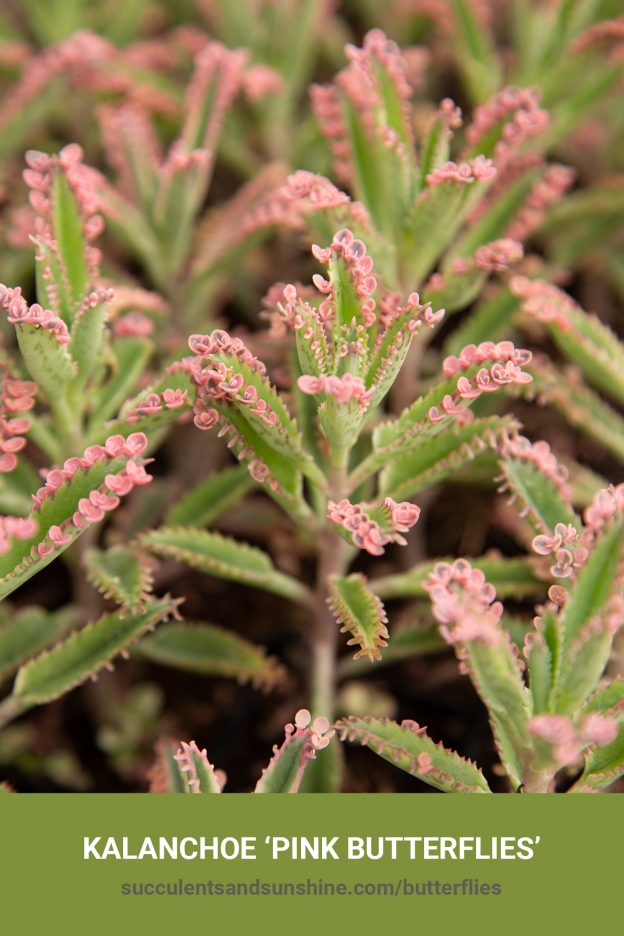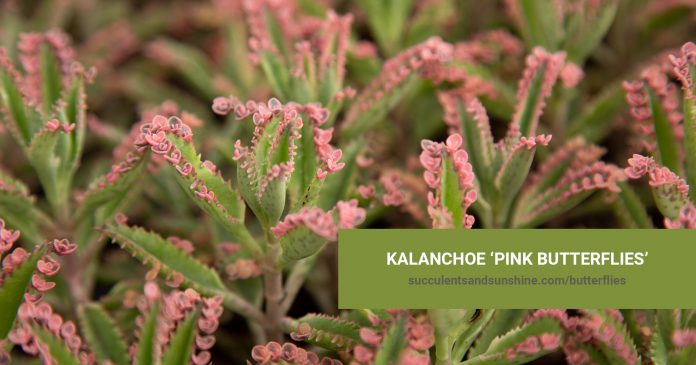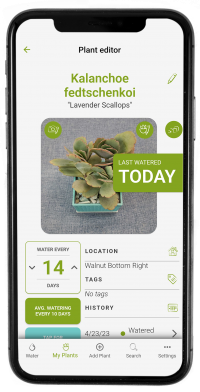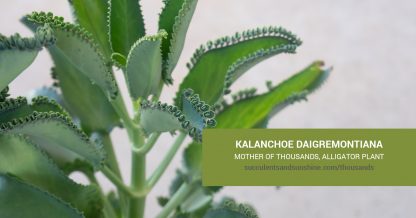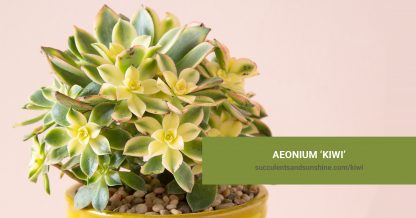Care and Propagation Information
General Care for Kalanchoe 'Pink Butterflies'
Kalanchoe 'Pink Butterflies' is a beautiful addition to your garden. While its parent plants are considered noxious due to the ease of propagation from plantlets, 'Pink Butterflies' does not root as easily from plantlets, and is much easier to plant in a variety of places around your garden.
If you're planning on growing it indoors, be sure to keep it under a grow light or in a sunny window.
Watering
'Pink Butterflies' has typical watering needs for a succulent. It's best to use the “soak and dry” method, and allow the soil to dry out completely between waterings. This succulent is summer dormant, but also needs less frequent watering in the winter.
And be sure to get our FREE watering cheat sheet so you can learn how to tell if your succulents are getting too much water (and how to save them if needed).
Where to Plant
Kalanchoe 'Pink Butterflies' is not cold hardy, so if you live in a zone that gets colder than 30° F (-1.1° C) in the winter, it's best to plant this succulent in a container that can be brought indoors. It does well in partial sun to partial shade.
Because the plantlets on this succulent are variegated, they are unable to produce their own chlorophyll.
Plant in an area of your home or garden that gets bright light or filtered sun. It's much easier for this succulent to burn due to its variegated state. Planting in a terra cotta pot on a windowsill or porch is ideal.
How to Propagate Kalanchoe 'Pink Butterflies'
The easiest way to propagate 'Pink Butterflies' is by taking stem cuttings. While it does produce plantlets, it's much easier to propagate a cutting.
Cuttings
To grow 'Pink Butterflies' from cuttings, use a sterile, sharp knife or pair of scissors. Remove a stem from the main plant, and allow it to callous for several days before planting in well-draining soil. Water whenever the soil has dried out completely.
Plantlets
It is difficult - but not impossible - to propagate 'Pink Butterflies' from its bright pink plantlets. To remove a plantlet from the mother plant, simply pull gently from the leaf.
There are several things you can do with the babies now. You can allow the plantlet to sit for a day or two to callous over, and then place on well-draining soil.
You can also treat the plantlets like germinated seeds. Place them on well-draining soil, and cover with clear plastic to create a small greenhouse. Grow under the plastic film until they form roots, and are able to be transplanted into a separate planter.
Be sure to give the plantlets plenty of light so they are able to form roots.
